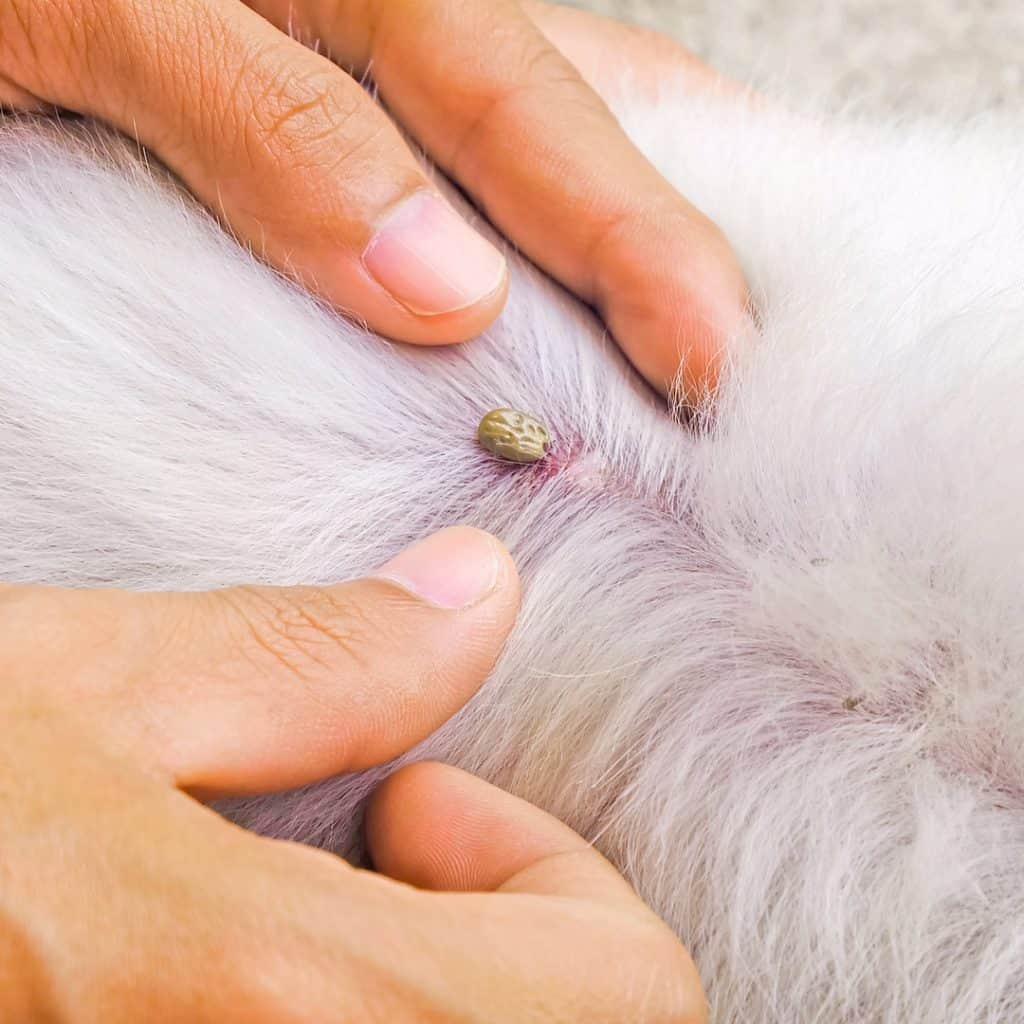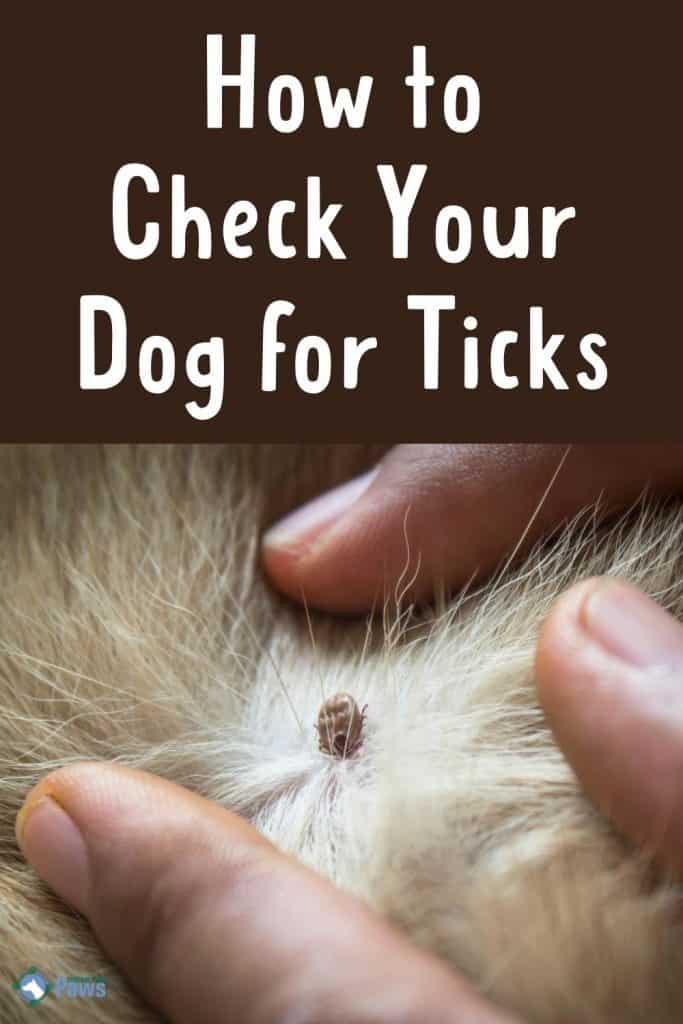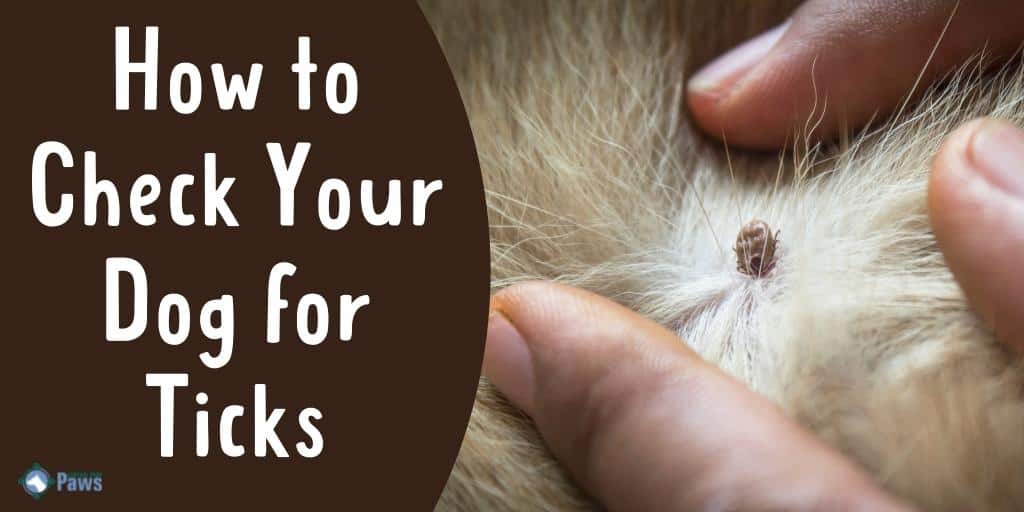Ticks are something those in the Midwest are all too familiar with since 95% of Lyme disease cases[1] come from this area.
Though ticks have a strong presence in the Midwest, they are found throughout the U.S.
Whether you’re out hiking with your dog or just playing in the backyard, ticks can be found just about anywhere. Ticks love warm, humid weather where they flourish.
Although, areas that are hot and dry are not their favorite climates since they will dehydrate unless they can find somewhere to shelter with moisture, such as piles of leaves.
Because ticks tend to hide in these areas, dogs often attract more ticks than humans since, by nature, they are far more curious and tend to adventure off the path.
And though we use tick preventative, we still always check our dogs thoroughly whenever we are out camping in areas with a high population of ticks.
Because ticks are a common parasite here in Minnesota, I have gotten pretty good at knowing where to find ticks on my dogs and how to deal with them properly.
Here’s how to check your dog for ticks:
Related: Credelio Oral Flea and Tick Treatment for Dogs Review
Where to Check for Ticks on Your Dog
Heads and Ears
A dog’s head and ears are an easy place for dogs to pick up ticks.
Though they often travel further down their body, ticks usually attach themselves to a dog’s face and ears as they snuffle about high grass.
But some ticks will secure themselves to a dog’s head, especially behind and in your dog’s ear, where it is both warm and moist.
Eyelids
Another place ticks enjoy attaching themselves is along with your dog’s eyes and eyelids.
Often these ticks are overlooked until after they’ve been attached for a while since they look like the brown crusty eye discharge that can build up or a skin tag.
Toes
Since most dogs don’t wear shoes, it is easy for ticks to affix themselves to the bottom of our dog’s feet.
And ticks find the areas between the toes the perfect place to attach themselves.
When looking for ticks between your dog’s toes, it is best to gently run your fingers over their paws and in between their pads.
Because the area between their toes is sensitive, great care should be taken when removing ticks from this area.
Tail
Ticks love hiding on the underside of a dog’s tail because it is dark, moist, and warm.
And unfortunately for our dogs, it is an area often overlooked by dog parents when looking for ticks.
The best way to find ticks under your dog’s tail is to run a fine-toothed comb along your dog’s tail.
Groin
Another warm, moist, dark area ticks like to attach themselves to is your dog’s groin area.
Plus, if your dog enjoys lounging on the lawn, it is easy for your dog to pick up these pests.
Under the Collar
Under your dog’s collar or harness is the perfect place for ticks to hide, which is why it is vital to remove your dog’s collar and harness to more thoroughly check your dog for ticks.
Plus, the area under the collar or harness tends to stay nice and warm, just like ticks like it.
Armpits
Armpits are where I find the most ticks on my dogs. Not only is it easy for the
What to Do if You Find a Tick

There are two methods for removing a tick safely.
The first is to use a tick remover, like the Tick Check or the HomeSake tick removal tool.
To use a tick removal tool, you slide the tool between the tick and your dog’s body and pull the tick out.
Both tools are similar, so it comes down to personal preference.
Tick Check has a metal head and is less flexible, plus has a longer handle. The Homestake brand is plastic and smaller, and a lot cheaper.
The second method is using tweezers.
Gently but firmly grasp the tick near its head and slowly pull it out. Be sure to pull straight out and fully remove the tick’s head.
If you could not get the head out during removal, contact your vet for assistance.
After removing the tick, gently clean the bite area with soap and water.
The NIH[2] recommends keeping ticks for a week or two to ensure there are no adverse reactions.
But, if you cannot securely store the tick in a jar, take a close-up photo of the tick in case your dog reacts to the bite.
When removing the tick, be careful not to squeeze it as it can release disease-causing bacteria into your dog’s bloodstream.
What Not to Do
If you find a tick on your dog, do not remove the tick by:
- Burning it off
- Smothering it with vaseline
- Twisting it when pulling it off your dog
What to Watch For
If a tick has bitten your dog, be sure to watch the site of the bite for rashes, redness, swelling, and irritation.
Tick bites can also cause illnesses[3] like Lyme Disease, Canine Anaplasmosis, Rocky Mountain Spotted Fever, Canine Babesiosis, Canine Ehrlichiosis, and Canine Hepatozoonosis, and Canine Bartonellosis.
Common symptoms of these diseases include:
- Lameness
- Fever
- Joint stiffness
- Lethargy
- Loss of appetite
If you suspect your dog has a tick-borne illness, you must seek medical attention for your pup.
And that’s how to check your dog for ticks!
FAQs
How do dogs get ticks?
Ticks crawl onto dogs as they walk the venture through grass, out in the woods, and sniffing about shrubs.
What happens if a tick goes unnoticed on a dog?
If a tick goes unnoticed, they will attach themselves to a dog and fill themselves with blood.
Can ticks on dogs affect humans?
A tick can move from a dog to a human.
How often should you check your dog for ticks?
Even if you never go out hiking, checking your dog every few days is a great way to keep your dog safe.
What kills ticks on dogs instantly?
Frontline is a tick product that kills on contact, whereas several tick products require a tick to bite the dog to be effective.
How do you find ticks on black dogs?
It is easy to feel ticks; when I check my dogs for ticks, I use my sense of touch more than just looking for them visually.
Resources
- https://www.usgs.gov/news/national-news-release/its-heat-and-humidity-new-study-finds-why-lyme-disease-common-north-rare
- https://medlineplus.gov/ency/article/007211.htm
- https://www.akcchf.org/canine-health/your-dogs-health/caring-for-your-dog/canine-tick-borne-disease.html





